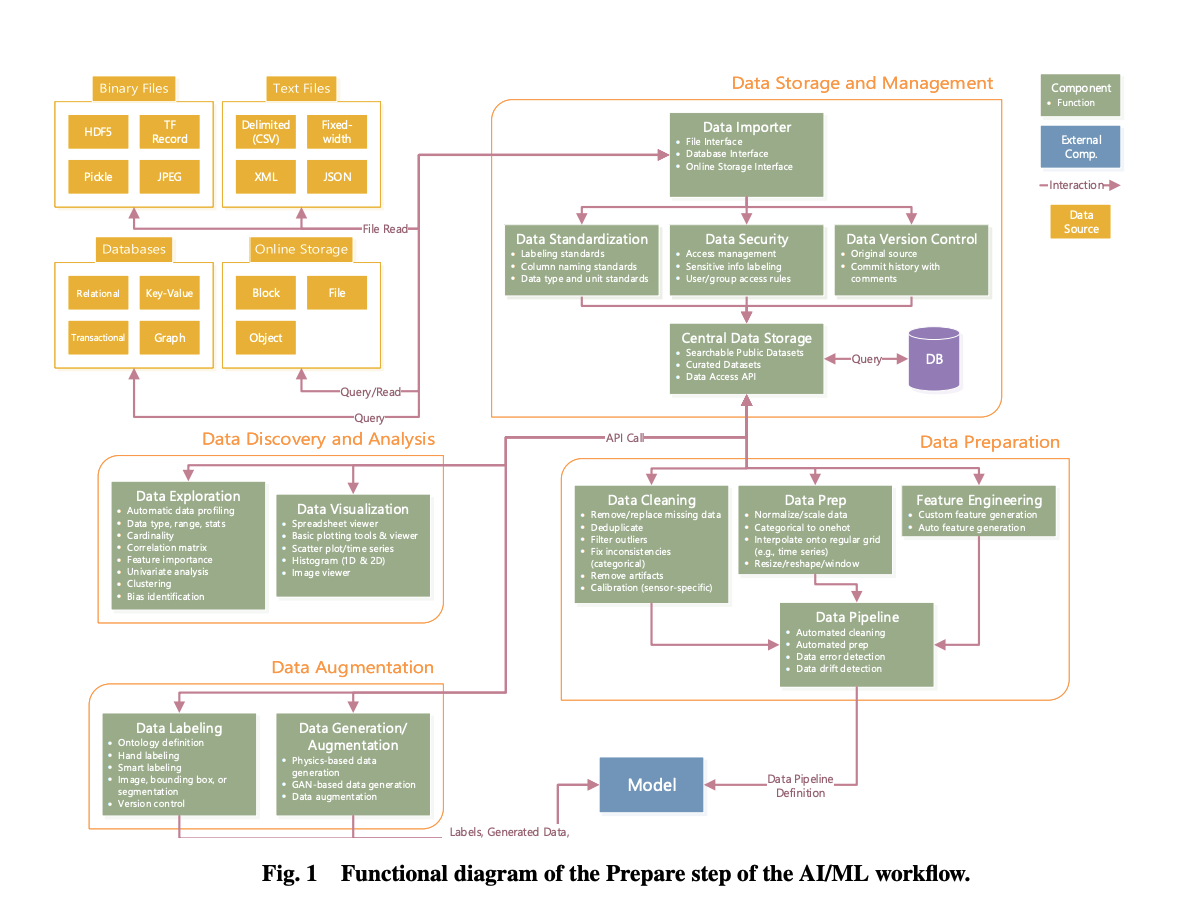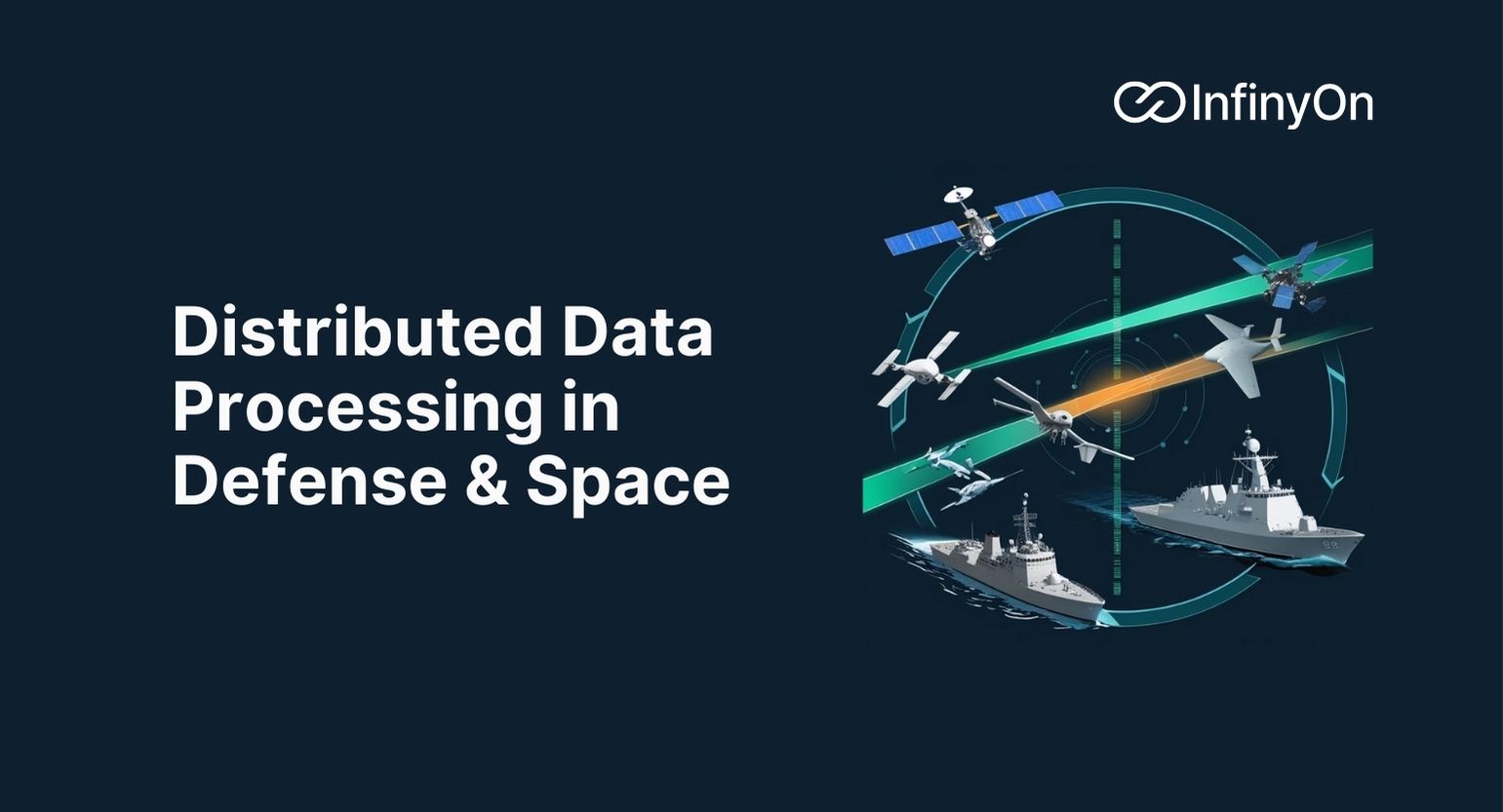Use Cases
Docs
Blog Articles
BlogResources
Pricing
PricingDistributed Data Processing in Space.

VP Product, InfinyOn Inc.
Introduction
At InfinyOn one of my first conversations with Alan Chen our Head of Engineering was about autonomous drones and UAVs. Alan previously worked at AeroVironment an autonomous drones and vehicles company with some outstanding products. We have been chatting space and defense off and on for a while.
Recently we had a number of visitors on InfinyOn and Fluvio from defense and space companies like Blue Origin, Vast Space, Booz Allen Hamilton, Lockheed Martin.
And I thought let me use this opportunity to outline the use cases, challenges, opportunities in defense and space tech. I will follow up this post with another one on the future direction and architecture patterns.
Space and defense has been a source of insatiable curiosity for me. In my teens, I aspired to join the Indian Air Force until myopia at age 13 ended that dream.
For 15 years, I experienced defense and space through movies and video games. In 2016, at Kovid Labs I go tmy first opportunity to work with defense agencies and initiatives protecting national interests. Later in 2021, I came close to working in space tech at a trailblazing Canadian startup SkyWatch. This is what I learned.
Defense and Space data architecture demands the highest levels of security, memory safety, and efficiency.
And since 2023, with InfinyOn, I have the privilege to work with a data platform suitable for defense and space data processing!
9 use case patterns
Imagine you are playing a war based game like the ones made by WarGaming - If you are able to zoom out at the highest level, in a single view assess the state of your critical assets, threat vectors, zoom in real-time on demand and actuate specific equipment -
What infrastructure do you think you will need to win?
The use case patterns will give you clues to answer that question.
1. Enhanced Situational Awareness: According to Maris, “Situational awareness in the military is the cornerstone of effective military and defense operations, enabling forces to make informed decisions in rapidly changing environments.” Situational awareness provides a complete tactical picture from command to lower levels. Includes real-time tracking of assets (troops, vehicles, aircraft, satellites) and enable rapid decision-making to adapt with situations.
2. Intelligence, Surveillance, and Reconnaissance (ISR): According to the Department of Defense, “intelligence, surveillance, and reconnaissance (ISR) systems–including manned and unmanned airborne, space-borne, maritime, and terrestrial systems–play critical roles in support of current military operations. Demand for ISR capabilities, including processing, exploitation, and dissemination, has increased dramatically.” ISR is all about continuously processing data from multiple sensors and sources. Real-time video analysis and interpretation and automated detection and tracking of targets are basic capability that feeds into the ISR system.
3. Command and Control Systems: Just like the name suggest, battle management software involves remote centralized command and control using cloud-based command and control (CBC2) for centralized data management. Real-time data analysis and decision support interoperability between different systems and coalition forces
4. Simulation and Training: Training simulations are invaluable in space, defense, aircraft. Personalized training regimes using AI driven simulations of realistic scenarios are extensively used in virtual and augmented reality training environments.
5. Autonomous Systems: Autonomous weapons and vehicles systems including UAVs, ground vehicles, submarines are a present reality. Autonomous systems requires integrated operational controls, navigation system and on device intelligence to act.
6. Space Operations: Satellites and spacecrafts are increasingly equipped with onboard processing capabilities, acting as edge computing nodes. This brings in a degree of autonomy to satellite operations and a reasonable integration of space-based and terrestrial systems. On-board data processing capabilities also help reduce latency and the load on the network.
7. Multi-Domain Operations: Defense and intelligence operations involve integrating operations across land, sea, air, space, and cyber domains. This level of multi-domain integration presents unique challenges. Coordination of multi-domain assets is not a trivial feat and requires real-time data sharing and analysis across domains.
8. Communications in Challenging Environments: Defense systems often operate in Denied, Degraded, Intermittent, or Limited (DDIL) network conditions. This necessitates distributed systems capable of making autonomous decisions with limited or no communication. On top of that it requires caching, mirroring, and synchronizing data to the control centers while connected.
9. Cybersecurity: Defense systems need to handle different levels of classified information simultaneously and in real-time. This requires unique approaches to data segregation and access control; real-time threat detection and response; continuous analysis of network traffic and potential vulnerabilities, adaptive defense against evolving cyber threats.
There are surely more, but these 9 patterns cover a significant amount of ground in defense and space technologies and software.
Challenges
The use case patterns in defense and space are more complex than any typical software engineering project. They require a robust system engineering whereby a lean development team needs to get to a working system managing the technical details and constraints in minimal iterations.
The challenges come in the form of extreme security requirements which now includes quantum compute proof cryptography. While military grade encryption has not been cracked by Quantum algorithms yet, RSA public keys are proving to be vulnerable. Robust data privacy classifications, encryptions and more.
Besides extreme security requirements, there also exist the requirements of integrations between legacy and bleeding edge infrastructure, working with constrained compute resources, network connectivity. At the same time pushing the boundaries with autonomous command and control, applied artificial intelligence, and machine learning (AI/ML).
A Lockheed Martin publication from 2022 summarize the overarching needs:
As new emerging threats require faster than human-in-the-loop response times, next generation defense systems are requiring more autonomy, data processing, and decision making at the edge. These new systems are looking to artificial intelligence and machine learning (AI/ML) to provide higher levels of autonomous command and control. For space systems, onboard processing of advanced AI/ML algorithms, especially deep learning algorithms, requires a multiple magnitude increase in compute capability compared to what is available with legacy, radiation-tolerant, space-grade processors on current space vehicles. The next generation of space processors for AI/ML onboard will likely include a diverse landscape of heterogeneous systems including various combinations of CPUs, GPUs, FPGAs, and purpose-built ASICs.
I can experientially validate the challenges and direction in the Lockheed Martin paper. In 2016, we were building pilot implementations of multi-modal deep learning models in the context of monitoring and surveillance. And the entire flow of building and developing software and deep learning models to process audio, video and text on edge and cloud is challenging to say the least. There are problems in every step along the way from data acquisition, secure storage, annotation, modelling, deploying software and models, building edge to core software to run both on distributed devices and cloud, create multiple levels of complexity.
This diagram from the paper captures the complexity:

3 basic requirements
The technical requirements are consistent across multiple defense and space publications.
-
Data Security and Integrity: Ensuring the security and integrity of sensitive data across distributed systems is foundational. This includes protecting against cyber threats and maintaining data consistency across nodes.
-
Interoperability, Latency, and Network Reliability: Systems need to be interoperable between legacy and new systems, as well as between distributed operational and intelligence systems. In military operations, network connectivity is often unreliable or limited. High-bandwidth, reliable communication between space assets and ground stations remains a significant challenge. Distributed systems must handle high latency and intermittent connections while still providing real-time processing capabilities.
-
Complexity, scalability and performance management: Managing and coordinating distributed systems across various platforms (land, air, sea, space, and cyber) adds significant complexity to both development and operations. Limited power availability in space restricts computational capabilities. As the volume of sensor data grows, these systems need to scale efficiently while maintaining performance.
3 innovations
A lot of cutting edge innovation in defense and space technology is not public information until they are published. Among the published information three software innovations stand out.
Thales has developed a distributed cloud node architecture for military environments, providing local storage and computing capacities across various levels of command. This solution aims to enhance data-driven operations and maneuverability in challenging battlefield conditions.
Voyager Space and Palantir have partnered to integrate advanced AI tools into space operations. This includes using Palantir Foundry and the Artificial Intelligence Platform (AIP) to enhance payload management systems for the International Space Station and future commercial space stations.
DARPA is working on project Tractor with the goal - Eliminating Memory Safety Vulnerabilities Once and For All. If you did not guess it, this project is a new program to automate the translation of the world’s highly vulnerable legacy C code to the inherently safer Rust programming language.
How we think about defense and space at InfinyOn
We have been building military grade distributed streaming engine - Fluvio. We are a 100% aligned with DARPA on eliminating memory safety vulnerabilities.
Two of our biggest technological bets are Rust and Web Assembly.
A kicker to Rust’s memory safety is the web assembly security model. As per the official documentation: “The security model of WebAssembly has two important goals: (1) protect users from buggy or malicious modules, and (2) provide developers with useful primitives and mitigations for developing safe applications, within the constraints of (1).”
In addition to Rust and WASM, TLS and encryption hardens security even further.
We have learnt from users monitoring maritime vessels at sea, electrical vehicles on ground, static industrial assets in remote secure locations and built our distributed streaming engine and stream processing framework to be modular and portable.
Fluvio compiles down to a ~39 MB binary which deploys a fully functional streaming cluster on an ARM64 target. Its an idempotent system with controls to define delivery semantics, deduplication, offset, and partition management. And Fluvio has built in caching and mirroring ability to operate on the edge and synchronize with the cloud in DDIL network conditions.
Fluvio Connectors and Connector Development Kit enables developers to build protocol level connections to any remote system making it trivial to bridge legacy systems and modern systems. Smart Modules applied on top of connectors make them more than dumb pipes.
Stateful DataFlow provides the framework for building end to end stream processing flows with decoupled workers which can be deployed on the edge to process and transform data, aggregate data, run quantized and vectorized artificial intelligence and machine learning algorithms with built in state management and observability.
It’s a lean and mean distributed system ready to power various architecture patterns and use cases in space and defense tech. This will be a topic for another blog.
I am personally looking forward to InfinyOn powering defense and space operations in the near future.
If this article resonated with you consider sharing the article with others in defense and space.
And if you want to learn more about InfinyOn or have questions on distributed compute infrastructure for the age of space travel and AI ubiquity, use my Calendar Link to schedule some time to connect.
Stay in Touch:
- Join our community on Github Discussions or Discord to share your insights on stateful data flows.
- Subscribe to our YouTube channel for more tutorials and updates.
- Follow us on Twitter for the latest news.
- Connect with us on LinkedIn for professional networking.

